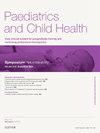Children with tracheostomies in the paediatric intensive care unit
Q3 Medicine
引用次数: 0
Abstract
Tracheostomy has a long history, and is a procedure that is carried out in ever growing numbers of children. The main indications for tracheostomy can be divided into airway obstruction, rehabilitation, and long term ventilation. The decision to place a tracheostomy is not trivial, and should be made by the multi-disciplinary team working together with the family, as well as the child where possible. Artificial airways such as a tracheostomy can carry significant risks. The National Tracheostomy Safety Project provides guidelines and resources for their management, which aim to mitigate these risks. Standardization of practices across hospital sites supports this. Appropriate training for all individuals involved in the care of a child with a tracheostomy is essential to minimize the risk of problems.
在儿科重症监护室进行气管切开术的儿童
气管切开术有着悠久的历史,是一项在越来越多的儿童中进行的手术。气管切开术的主要适应症可分为气道阻塞、康复和长期通气。气管切开术的决定不是微不足道的,应该由多学科的团队和家庭一起做出,在可能的情况下,还有孩子。气管切开术等人工气道有很大的风险。国家气管切开术安全项目为其管理提供了指导方针和资源,旨在减轻这些风险。各医院的标准化实践支持这一点。对所有参与气管切开术患儿护理的人员进行适当的培训对于最大限度地减少问题的风险至关重要。
本文章由计算机程序翻译,如有差异,请以英文原文为准。
求助全文
约1分钟内获得全文
求助全文
来源期刊

Paediatrics and Child Health (United Kingdom)
Medicine-Pediatrics, Perinatology and Child Health
CiteScore
1.20
自引率
0.00%
发文量
70
 求助内容:
求助内容: 应助结果提醒方式:
应助结果提醒方式:


